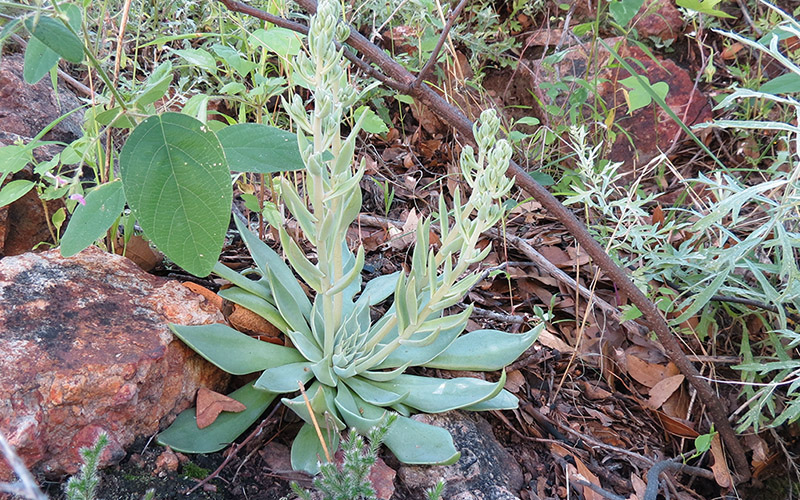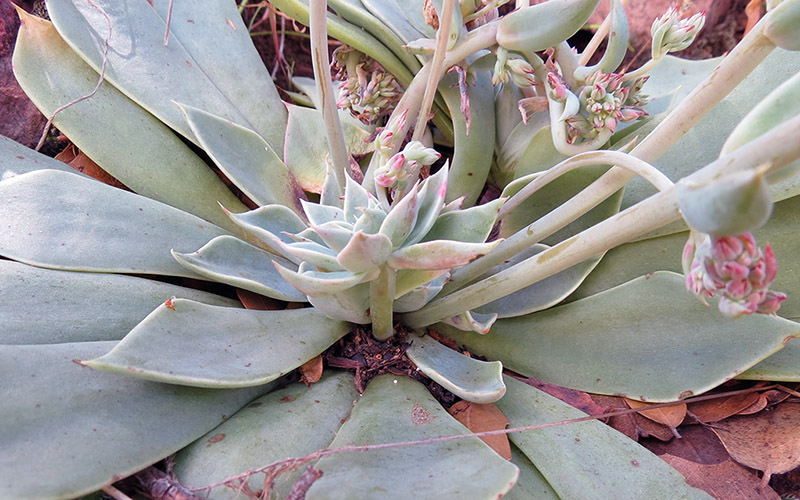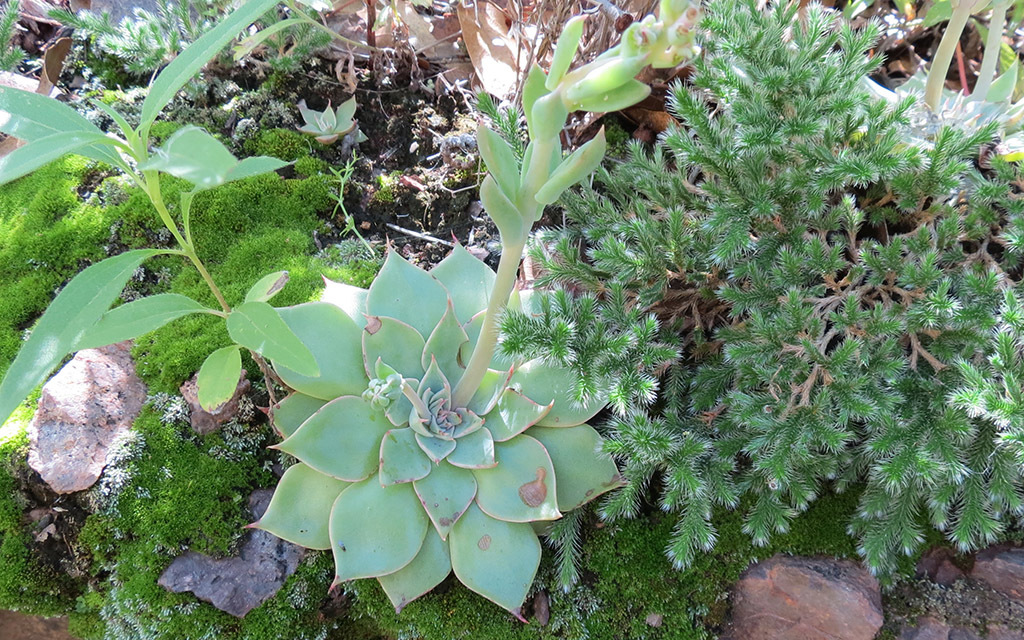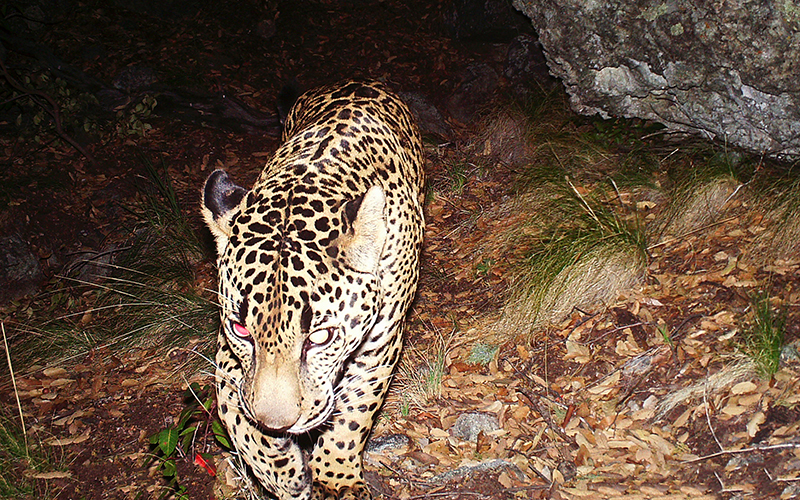
Bartram’s stonecrop is a succulent found throughout southern Arizona and northern Mexico. It will be listed as a “threatened” species under the Endangered Species Act on Sept. 30, which will give it certain protections to help it survive. (Photo courtesy of U.S. Fish and Wildlife Service)

Bartram’s stonecrop is a succulent found throughout southern Arizona and northern Mexico. It will be listed as a “threatened” species under the Endangered Species Act on Sept. 30, which will give it certain protections to help it survive. (Photo courtesy of U.S. Fish and Wildlife Service)

Bartram’s stonecrop is a succulent found throughout southern Arizona and northern Mexico. It will be listed as a “threatened” species under the Endangered Species Act on Sept. 30, which will give it certain protections to help it survive. (Photo courtesy of U.S. Fish and Wildlife Service)

Bartram’s stonecrop is a succulent found throughout southern Arizona and northern Mexico. It will be listed as a “threatened” species under the Endangered Species Act on Sept. 30, which will give it certain protections to help it survive. (Photo courtesy of U.S. Fish and Wildlife Service)
TUCSON – Bartram’s stonecrop is a bright, sea-green succulent that’s found in the Santa Rita Mountains in southern Arizona and northern Mexico. It looks similar to a succulent you’d buy at the grocery store, but this plant grows in a microhabitat at high elevation where it thrives in wet, shaded areas where temperatures are lower than the surrounding desert floor.
Such habitats aren’t common in the desert, making this succulent extremely rare, and under pressure. That’s why the U.S. Fish and Wildlife Service is designating it as a “threatened” species under the Endangered Species Act, which will give it certain protections, starting Sept. 30.
“The Bartram’s stonecrop is a beautiful little succulent that grows in a number of different mountain ranges, there’s about 50 different populations scattered around in the half a dozen of the sky islands here in southern Arizona,” said Randy Serraglio, who is the Center for Biological Diversity’s Southwest conservation advocate. “But each of those populations is very small. In fact, most of them have fewer than 50 individuals in the population.”
Sky islands are a series of isolated mountain ranges in southeastern Arizona and northern Mexico that promote biologically diverse plants and animals, according to the U.S. Forest Service.
With limited numbers and many threats, including drought, wildfires, plant collectors and a proposed copper mine, the plant has been up for consideration for listing under the Endangered Species Act since the 1970s.
The succulent, like more than 1,300 endangered and threatened species in the U.S., isn’t extinct yet. Serraglio said he often uses the game Jenga as an analogy to explain the extinction of species on Earth and what that means for humans.
“We’re losing all these different pieces,” Serraglio said. “We’re losing rivers and springs and we’re losing species. We’re losing habitat, and sooner or later, that thing is going to collapse. It’s just really important to stop the extinction crisis before that happens because our species still relies on this web of life for our survival.”
(Audio by Emma VandenEide/Cronkite News)
Although climate change and drought are the biggest threats to the succulent, Serraglio said, the Center for Biological Diversity is “fighting tooth and nail to stop the Rosemont mine from destroying the northern end of the Santa Rita Mountains.”
The proposed Rosemont Copper Mine south of Tucson, which is owned by Hudbay Minerals Inc., has faced setbacks in starting operations. In early September, federal regulators rejected the company’s request to reduce protected habitat for endangered jaguars, which are found in the area.
“The designation of Bartram’s stonecrop as an endangered species by USFW does not have any immediate impact on the Rosemont Project,” Hudbay said in an email. “Hudbay has completed multiple surveys for Bartram’s stonecrop, and to date no locations have been identified within the Rosemont Project area.”
But the Fish and Wildlife Service is concerned that the water needed for mining operations would affect jaguars as well as Bartram’s stonecrop (Graptopetalum bartramii), sometimes called the Patagonia Mountain leatherpetal.
A final rule from Fish and Wildlife states, the “ proposed mine pit would create a permanent drawdown of the water table, and groundwater would flow toward the pit and be lost to evaporation,” which could harm the plants near the proposed mine. “Given that Bartram’s stonecrop is consistently found in locations with nearby springs or other water sources, the loss of groundwater and changes in soil moisture and humidity are expected to negatively affect the plant.”
Jeff Humphrey, Arizona field supervisor for Fish and Wildlife Service said Bartram’s stonecrop has always been a “plant that’s occurred because it requires such a unique habitat or microhabitat. Humidity, cool, humid air in an otherwise desert environment – that itself makes it unique.”
The service has outlined a seven step interim recovery plan for Bartram’s stonecrop, which includes monitoring its status, research for conservation and education, and outreach about the plant. The interim plan will be in place for the succulent until an official recovery plan with goals is completed — a process that usually takes up to a year according to Humphrey.
Humphrey said the Fish and Wildlife Service will call on other agencies, such as the National Park Service, Bureau of Land Management and the Forest Service to assist in the recovery and protection of the species. They are “usually very eager to assist,” Humphrey said.
“Does it happen right away? No. So turning a tide in an environment is never a quick process. But this advantage of having it listed, it provides a real definitive moment when it says, ‘OK, it’s time for us to pay attention to this.’”



